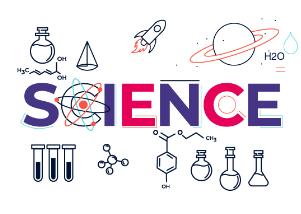





|
|
|
SCIENCE-K12-CLASS-6 |
|
M/J Comprehensive Science 1 Course Outline |
|
Course Description |
|
In fulfillment of Florida’s Next Generation Sunshine State Standards for 6th grade science, this class covers several different types of science such as physical science, ecology, and climatology.
The students will learn about what scientists do and the similarities and differences between theories and laws.
After reviewing the steps of the scientific method the students will design and conduct a scientific experiment.
Students will discover what matter and atoms are made of and will learn how to read the periodic table.
The class reviews the topics of force and motion, including Newton’s laws of motion.
The students will review the different types of energy and will learn about how energy is measured.
Ecology is introduced to students as they learn about abiotic and biotic factors.
The students will learn about how cells were discovered and will learn the basics of cell theory.
Students will review major organ systems as they learn about how living things are organized.
The students will learn about earth science, the water cycle, and the rock cycle.
Finally, the students will learn about climate and how weather patterns are formed.
They will also learn about the composition and function of the atmosphere. |
|
|
|
Course Objectives |
|
|
|
Plan and implement an investigation using the scientific method. |
|
Collect, display and interpret data from a scientific investigation. |
|
Identify and describe the relationship between force and motion. |
|
Identify chemical and physical properties and classify matter based on these properties. |
|
Understand and describe the relationship between matter and energy. |
|
Explain the origin and path of energy and its importance to all life on earth. |
|
Understand that traits are inherited and that traits can change over time. |
|
Understand that organisms respond to external stimuli and identify these responses. |
|
Know and identify the basic structure and components of the solar system, the earth’s atmosphere and the earth’s surface. |
|
|
|
Course Outline |
|
|
|
Course Introduction |
|
Introduction |
|
Understanding Plagiarism |
|
Course Description |
|
Course Links |
|
Pretest |
|
Assignment: Pretest |
|
MLA Formatting MSWord 2007 |
|
MLA Documentation updates |
|
MLA Citation |
|
MLA Incorporating Sources |
|
Science Therapy & Science In The World |
|
The Scientific Method |
|
The Scientific Method Projects |
|
Matters, Atoms and Elements |
|
Force, Motion and Acceleratin |
|
Energy |
|
Ecology: Organization In The Environment |
|
Cell Theory, Structure And Function |
|
Organization in Living Things |
|
Earth Science |
|
The Rock Cycle |
|
Climate & Whether |
|
Atmosphere |
|
Course Evaluation |
